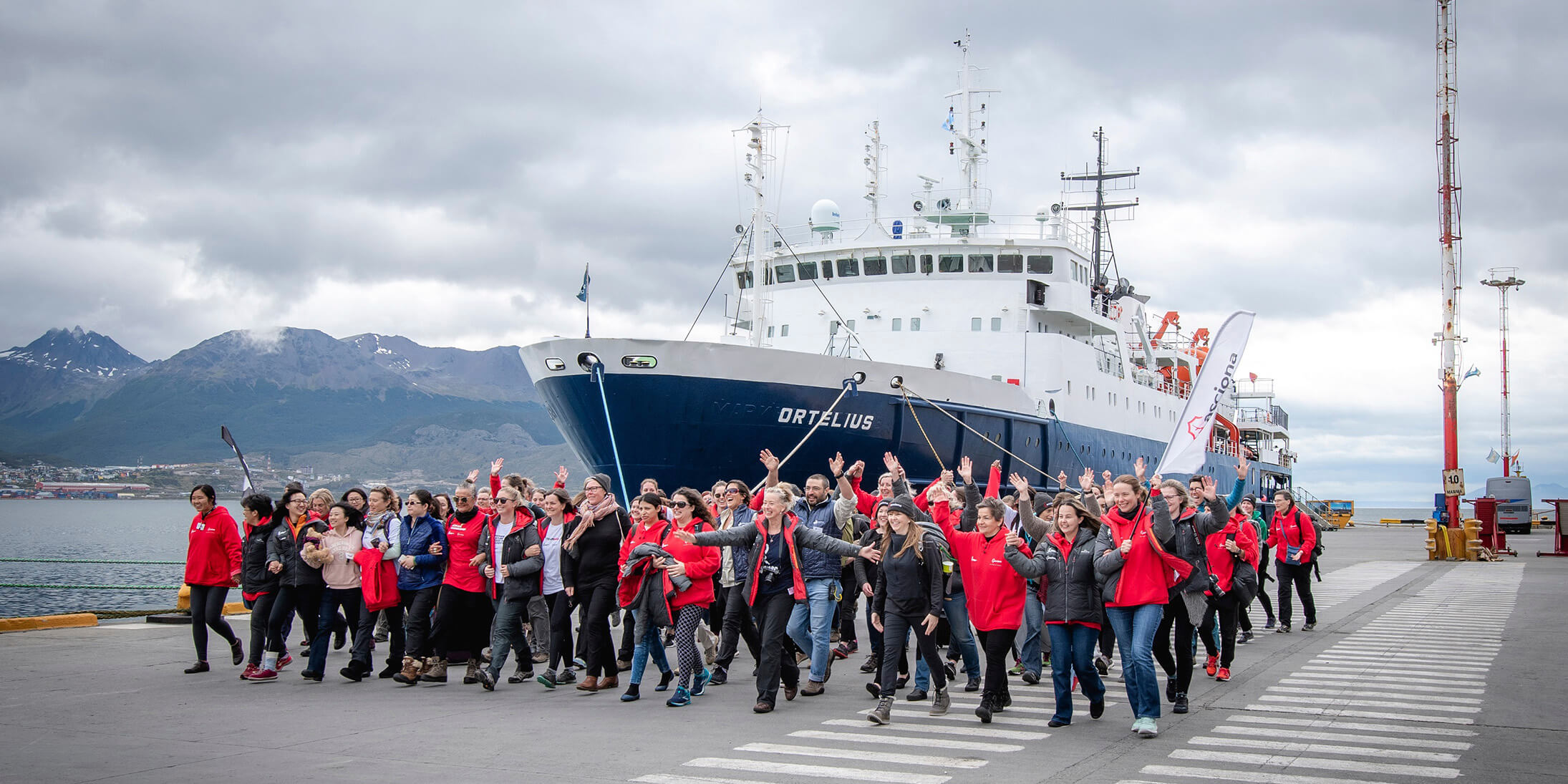Hinemoa Elder Professor Indigenous Health Research, Te Whare Wānanga o Awanuiārangi, Māori Strategic Leader, Brain Research NZ, University of Auckland Child and Adolescent Psychiatrist –Private Practice Waiheke Island, Auckland, New Zealand Māori New Zealander
I walked into the lounge fully equipped with my life jacket and winter accessories, eager to get an “I Heart China” sticker from Jing and then jump into the Zodiac for the landing that I have long hoped for. Soon, I saw our expedition leader walking in from the exit, shaking her head and stating “ the wind changed direction, it is too dangerous to make the landing…”
Antarctica could be full of uncertainties. Our efforts to visit the Great Wall Station can definitely speak to the unpredictability of an Antarctica voyage. However, it also shows collaboration, resilience, and relentless optimism of many Homeward Bound (HB) sisters.
The initial idea of reaching out to the Great Wall Station started among the Chinese HB multi-cohort chat group. Previous cohorts were able to visit the stations but due to short notice, they were only able to visit limited parts of the station. Thus, they urged HB4 Chinese team to reach out early. So we did. After more than a month of coordination, we set the sail towards Antarctic with a plan to visit the Great Wall Station on December 7th afternoon.
Soon after the starting of our voyage, we found out that December 7th was no longer a good option. With another round of e-mail exchanges albeit very limited network, we confirmed that December 5th would work.
December 5th finally came. The Chinese sisters have been checking on whether we could make a landing more and more frequently as the day approaches. However, the weather has been rough since the day before. Looking outside the window, I immediately got worried as the wave outside looked larger than what we experienced during the Drake passage passing and it was snowing outside. Surely, the expedition leader told us that the wind speed was 45 knots outside, and we can only hope for a better weather condition to make the landing. Finally, after a whole day of waiting, we were told to get ready for the landing. The beginning of this blog summarizes what eventually happened. Needless to say, we were really disappointed especially the Chinese members. For many of us, visiting the Great Wall Station is the highlight of this voyage and it would be a dream come true.
The happy ending came the day after. Even though most of us more or less accepted the reality, the expedition team the HB faculties did not give up. It was a beautiful sunny day and the ocean is calmer. I was in the shower after returning from the Carlini station visit in the morning when I heard the announcement asking me to go to the bridge. Suddenly I felt hope and ran to the bridge as fast as I managed to. We were not able to get connected with the Great Wall Station for the first several trial but mid-afternoon, we finally got hold of them and confirmed that we could make a landing the same day.
The largest women scientific expedition to Antarctica was able to finally visit the Great Wall Station full of excitement. We were extremely fortunate to be able to learn about the history of Great Wall Station and visit some of the facilities. In many ways, the development of the Great Wall Station also shows the resilience and optimism of Chinese scientists and early Antarctica explorers as China in the 1980s is far less developed as it is now.
Antarctica is a special place, as it tests our patience and persistence when conducting even the basic daily tasks such as communicating with each other. For several days, we were not able to have good internet to keep the coordination going. Each exchange depends on the technology, the weather, and the ship’s whereabouts. I thank everyone who expressed their generosity, kindness, and flexibility to make this visit happen and it certainly will be one of the best memory of my lifetime voyage to Antarctica.
